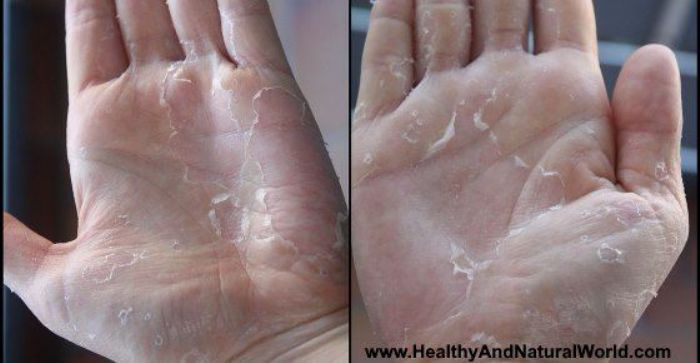
Peeling hands
By Zia Sherrel, MPH
People use their hands extensively and expose them to sun, water, irritants, and allergens. This can result in the skin becoming damaged and peeling.
For some, the skin can peel as a result of dry skin. It can peel as a result of some skin conditions, such as eczema and psoriasis, which can be uncomfortable and interfere with a person’s daily life.
The treatment for peeling hands varies depending on the cause but often involves moisturizing creams or ointments to hydrate dry skin. Some cases may require prescription medications that help heal any underlying causes.
This article looks at peeling hands and the potential environmental and medical causes. It also discusses when a person should contact a doctor, and how to prevent peeling hands.
Hand-washing
While hand-washing is an excellent practice for good hygiene, the skin on the hands may peel if an individual washes their hands too often.
Additionally, if someone uses harsh soaps, excessively hot water, and does not moisturize after washing, they may develop skin problems on their hands.
Although hand-washing effectively disinfects the hands, it also removes the natural oils that keep the skin healthy and moisturized.
Another practice that may dry out the hands and cause them to peel is using too much hand sanitizer. Hand sanitizer has an alcohol-based formula that causes the skin to become dry.
Treatment
The American Academy of Dermatology suggests the following routine to help prevent and treat dry hands due to hand-washing:
- Wash the hands for at least 20 seconds using lukewarm water and soap.
- Dry the hands with a clean towel, leaving some water on them.
- While the skin is damp, apply moisturizing cream or ointment onto the skin, ensuring that it reachers the fingertips and nails.
Dermatologists recommend using creams that are fragrance and dye-free, and that contain petrolatum or mineral oil.
If a person uses hand sanitizer, a person should apply the cream or ointment as soon as the hand sanitizer has dried.
Climate and temperature
The climate can affect the skin on the hands. For example, during the winter, the humidity in the air is lower, which can cause the skin on the palms to dry out, crack, and peel.
Some individuals may find that if their hands sweat during hot weather it can lead to irritation and peeling.
Treatment
To help provide relief for dry skin, a person can:
- apply moisturizer after bathing or showering
- avoid soaps that contain fragrances or alcohol
- apply hand cream after every hand wash
- apply petroleum jelly on the hands before bedtime
Sunburn
Staying in the sun for too long can cause sunburn. This can affect any part of the body that is exposed to the sun, including the hands.
As sunburn heals, the skin may peel. The peeling happens as the body sheds the damaged skin and creates a new top layer.
Treatment
To treat sunburn, a person can:
- take frequent, cool baths and showers to ease the pain
- apply moisturizers that contain soy or aloe vera to the skin, especially after showering, to ease dryness
- drink additional water
- cover the burned areas of skin while they are healing to prevent further sun damage
- use a mild topical cortisone cream to help calm inflammation on the skin
Hand dermatitis
Hand dermatitis is also called hand eczema. It accounts for 20% to 35% of all dermatitis forms.
According to the National Eczema Association, hand eczema can occur as a result of genetics, irritants, and allergens.
Eczema symptoms include:
- itching
- dry and sensitive skin
- inflamed and discolored skin
- rough patches of skin
- oozing or crusting
- areas of swelling
Atopic hand dermatitis
This type of eczema occurs when the skin barrier function is impaired. It normally triggers due to contact with irritants. It typically presents as vesicular or discoid patterns.
Vesicular eczema presents as itchy patches of skin-colored blisters. It often results from sweating.
Discoid eczema presents as scattered and well-defined plaques. It can result from dry skin, scratches, and contact dermatitis.
Irritant and contact dermatitis
When an irritant or allergen comes into contact with the body, the immune system turns on and produces inflammation, causing the symptoms of eczema.
Allergic contact dermatitis is a condition that occurs when an allergen touches the skin. Some common causesTrusted Source of allergic contact dermatitis include poison ivy, nickel, and rubber gloves.
Allergic contact dermatitis appears as redness, swelling, and blisters. If the blisters break, they may harden, and then the skin may peel.
Some people may have sensitivities to fragrances found in personal hygiene products such as soaps, moisturizers, shampoos, and conditioners.
Exposure to these chemicals may cause the skin on their hands to peel.
Harsh chemicals in cleaning supplies may also cause the skin to peel after exposure. It is always best practice to use rubber gloves to avoid skin contact with any chemicals.
Treatment
Treatment for eczema includes:
- reducing contact with irritants, including water
- using soap-free cleanser when washing hands
- applying emollient creams and reapplying them after hand-washing
Medications to treat eczema include topical steroids.
Palmoplantar psoriasis
Psoriasis is a condition that occurs as the result of an overactive immune system. It leads to inflammation of the skin. The inflammation can appear as raised plaques or scales on the skin.
When psoriasis appears on the hands or soles of the feet, healthcare professionals refer to this as palmoplantar psoriasis.
A person with psoriasis on the hands may experience dry and thickened skin with painful cracks.
It can appear similar to hand dermatitis.
Treatment
A person can treat mild cases using topical treatments, including:
- emollients
- coal tar
- topical steroids
Infections
Certain infections may cause the hands to peel.
One example is tinea manuum, a fungal infection that often starts on the palms and may spread to the backs of the hands and fingertips. It causes rash-like sores, which can peel.
A person with tinea manuum may develop skin on the hands that is:
- thickened
- itchy
- dry
- scaly
Treatment
Treatment includes topical antifungals.






